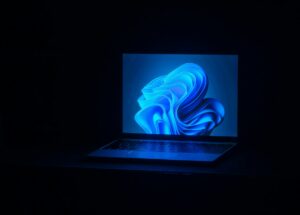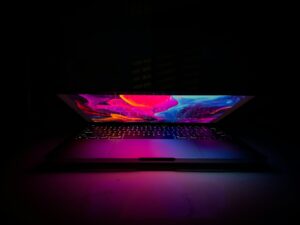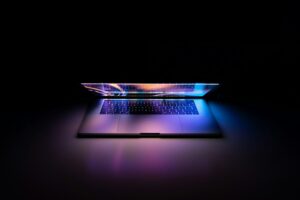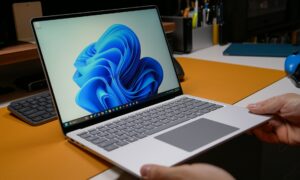The Ways to Clean Your Laptop Without Causing Any Damage to It

The Ways to Clean Your Laptop Without Causing Any Damage to It
A laptop is one of the items that we use the most regularly in our day-to-day lives, and as a result, it is frequently subjected to dust, fingerprints, and accidental spills. Over the course of time, dirt may have an impact on its function, lead to overheating, and even cause harm to the components found within. On the other hand, cleaning your laptop takes caution since if you use the incorrect techniques or products, you might do irreparable damage.
Through the use of this tutorial, you will learn how to clean your laptop in a manner that is both safe and effective, so ensuring that it remains in pristine shape.
1. Before beginning the cleaning process, turn off the power and unplug the device.
Before you begin, you should always:
- Put your laptop into sleep mode.
- It should be disconnected from the source of electricity.
- In the event that the battery may be removed, do so.
Your safety is ensured and inadvertent short circuits are avoided as a result of this.
2. Acquire the Appropriate Equipment for Cleaning
Steer clear of strong chemicals and products that are abrasive. In its place, get ready:
- rags made of microfiber
- Brush with gentle bristles
- Using compressed air can
- 70% isopropyl alcohol, non-hazardous for electrical devices
- The cotton swabs
- Water that has been distilled (for cleaning screens)
3. Begin with the outside casing of the vehicle.
On the outside of the device, dust and fingerprints eventually gather.
- To clean the casing, use a microfiber cloth that has been gently dampened.
- It is important to avoid leaking water near apertures or ports.
- Use a tiny quantity of isopropyl alcohol to remove markings that are difficult to remove.
4. Make Sure the Keyboard Is Sanitized
Keyboards are a breeding ground for germs, dust, and crumbs.
- Hold the laptop in an inverted position and shake it lightly to remove any debris.
- Make use of pressurized air to remove dirt from in between the keys.
- To clean the keys, use a towel that has been soaked with alcohol.
- It is important to avoid using an excessive amount of liquid since it might leak inside and cause harm.
5. Pay Attention to the Touchpad in the Device
Because of its sensitivity, the touchpad has to be cleaned with extreme care.
- A microfiber cloth that has been soaked in a tiny quantity of alcohol or distilled water should be used.
- In order to prevent the surface covering from being damaged, wipe carefully.
6. Scratching the screen should be avoided while cleaning it.
Displays on laptops are fragile and may be damaged by cleaning products that are too strong.
- Convert isopropyl alcohol and distilled water into a mixture of equal parts.
- Apply the solution on a microfiber cloth and dampen it, but do not saturate it.
- Apply a light circular motion to the screen as you wipe it.
- A liquid should never be sprayed directly onto the screen.
7. Clear the vents and ports of any built-up dust.
An accumulation of dust may lead to overheating as well as a decrease in performance.
- To remove dust from vents and ports, you may use compressed air to blast it out.
- To prevent the spraying of liquid propellant, hold the can in an upright position.
- To prevent damage to the fan, maintain brief bursts.
8. Clean areas that are often touched
Germs may be found on the surfaces of laptops that are often handled.
- Utilize a microfiber cloth and 70% isopropyl alcohol to clean it.
- It is important to clean the palm rests, touchpad, and keyboard.
- Steer clear of cleansers that include bleach or ammonia.
9. Stay away from everyday cleaning mistakes.
There are a lot of laptops that are damaged because to incorrect cleaning.
- Paper towels provide a risk of scratching surfaces, therefore avoid using them.
- The screen should never be cleaned using window cleaners.
- Keep in mind that you should not wet cleaning cloths or spray substances directly.
10. When it comes to older laptops, you should think about cleaning the internal components.
Cleaning the inside of your laptop could be necessary if it is overheating or making a lot of noise.
- You should only open the case if you are certain and if you have the appropriate instruments.
- The dust that accumulates on fans and heat sinks may be removed using compressed air.
- Take it to a professional for risk-free service if you are uncertain about it.
11. Ensure that you have a consistent cleaning schedule.
Heavy accumulation may be avoided with only a small bit of frequent maintenance.
- The outside should be cleaned once a week.
- On a monthly basis, clean the screen and the keyboard.
- Clean vents thoroughly every three to six months.
Not only does maintaining a clean laptop improve its look, but it also improves its performance and extends its expected lifespan. Protecting your gadget from dust, bacteria, and overheating may be accomplished without putting it at risk of harm if you use the appropriate tools, use gentle procedures, and do routine maintenance.




